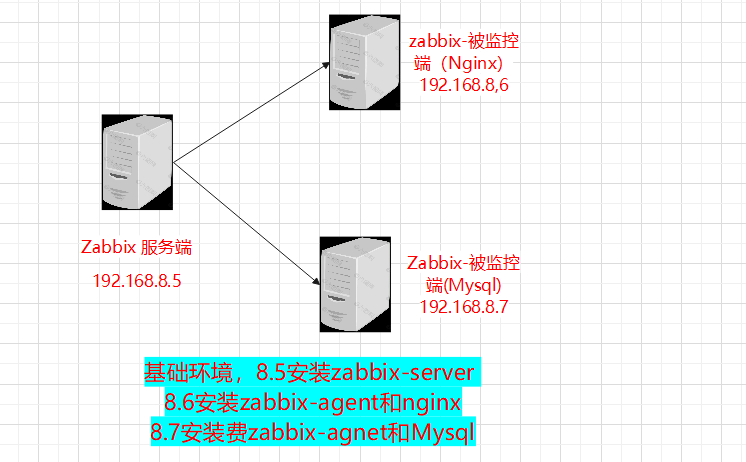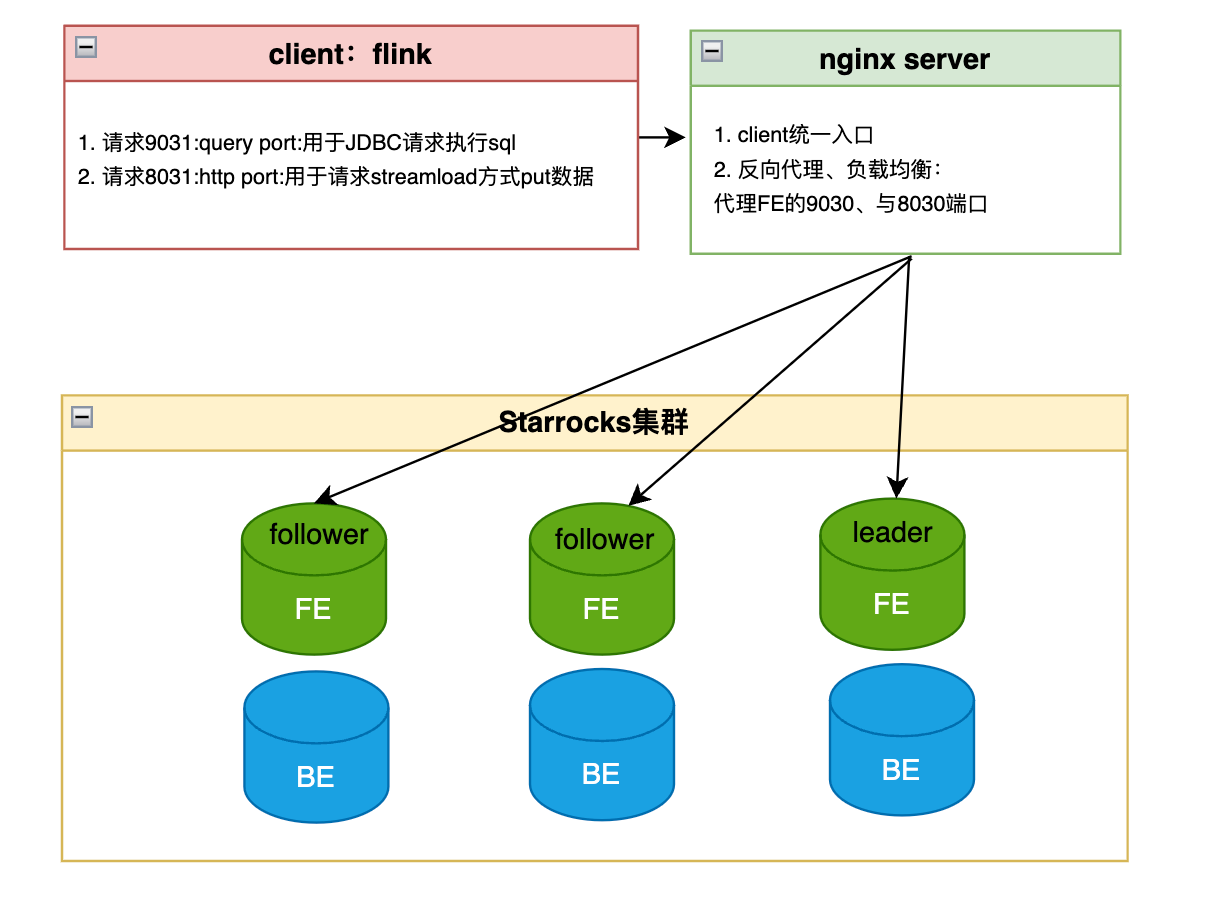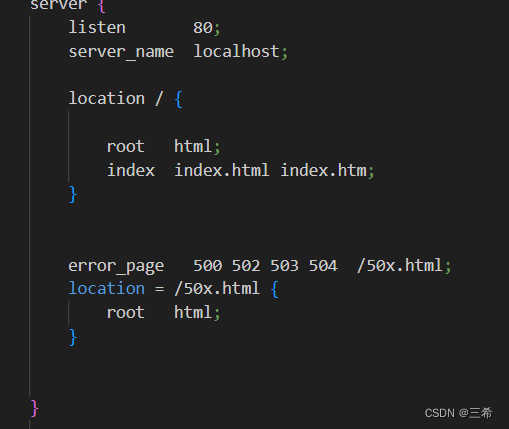文章目录
一、nginx常用的转发规则
location 指令说明
| 指令 | 说明 |
|---|---|
| = | 用于不含正则表达式的 uri 前,要求请求字符串与 uri 严格匹配,如果匹配 成功,就停止继续向下搜索并立即处理该请求。 |
| ~ | 用于表示 uri 包含正则表达式,并且区分大小写。 |
| ~* | 用于表示 uri 包含正则表达式,并且不区分大小写。 |
| ^~ | 用于不含正则表达式的uri前,要求Nginx服务器找到标识uri和请求字 符串匹配度最高的 location 后,立即使用此 location 处理请求,而不再使用 location 块中的正则 uri 和请求字符串做匹配。 |
| !~ | 区分大小写不匹配。 |
| !~* | 不区分大小写不匹配 |
| /a | 普通前缀匹配,优先级低于带参数前缀匹配。 |
| / | 任何请求都会匹配 |
location转发使用
# 如果请求的是:http://localhost:80/api1,
# 转发形成的就会是:http://localhost:8001/
location /api1/ {
proxy_pass http://localhost:8001/;
}
# 如果请求的是:http://localhost:80/api1,会被匹配到
# 转发形成的就会是:http://localhost:8001/
# 如果请求的是:http://localhost:80/api1/test,不会被匹配到,因为是精确匹配
location = /api1/ {
proxy_pass http://localhost:8001/;
}
# rewrite重写了请求路径,break不可省略,$1为正则匹配的内容
# ^/api1/(.*)$,在这个正则表达式中,$1为(.*)中的内容
# proxy_set_header的使用并不会失效
# 如果请求的是:http://localhost:80/api1,
# 转发形成的就会是:http://localhost:8001/
location ~ /api1 {
rewrite ^/api1/(.*)$ /$1 break;
proxy_set_header test001 $host:$server_port;
proxy_set_header test002 $remote_addr;
proxy_pass http://localhost:8001;
}
二、upstream负载均衡使用
#server只能是ip+端口,不然启动报错
upstream api{
server localhost:9001;
server localhost:9002;
server localhost:9003;
}
#proxy_pass里面的api对应的是upstream后面的api
location /api/ {
proxy_pass http://api/;
}
三、server_name使用
- 看下列代码,端口一样,server_name不一样
- 访问http://www.test001.com/api/test,进入第一个server,转发的实际为http://localhost:9001/test
- 访问http://www.test002.com/api/test,进入第二个server,转发的实际为http://localhost:9002/test
- 对于没有配置的server_name,默认进入第一个server处理
- 访问http://127.0.0.1/api/test,进入第一个server,转发的实际为http://localhost:9001/test
- 访问http://www.test003.com/api/test,进入第一个server,转发的实际为http://localhost:9001/test
#本机host配置
127.0.0.1 www.test001.com
127.0.0.1 www.test002.com
127.0.0.1 www.test003.com
server {
#监听端口
listen 80;
#服务名
server_name www.test001.com;
location / {
root html;
index index.html index.htm;
}
location /api/ {
proxy_pass http://localhost:9001/;
}
#500类型错误处理
error_page 500 502 503 504 /50x.html;
#映射文件50x.html
location = /50x.html {
#相对路径
root html;
}
}
server {
#监听端口
listen 80;
#服务名
server_name www.test002.com;
location / {
root html;
index index.html index.htm;
}
location /api/ {
proxy_pass http://localhost:9002/;
}
#500类型错误处理
error_page 500 502 503 504 /50x.html;
#映射文件50x.html
location = /50x.html {
#相对路径
root html;
}
}
四、其他常用配置
限制请求类型
- 只允许GET和POST请求,写在server块
if($request_method !~ ^(GET|POST)$ ){
return 403;
}
处理静态资源目录遍历问题
- 过滤…/ |…,写在server块
if( $request_uri ~* ..[/] ){
return 404;
}
限制客户端使用的ip或者域名
- 写在server块
#当写127.0.0.1的时候,使用localhost会报500,只能使用127.0.0.1
if ( $host !~ ^127.0.0.1 ){
return 500;
}
五、需要注意的地方
- 当使用 location ~ 的时候, proxy_pass结尾不能为 / ,不然会报错
- access_log需要写在log_format后面,不然启动会报错。
- access_log只能打印出请求的路径,无法打印出代理之后的路径。
location /api1 探讨
# 如果请求的是:http://localhost:80/api1,
# 转发形成的就会是:http://localhost:8001/api1
location /api1 {
proxy_pass http://localhost:8001;
}
# 如果请求的是:http://localhost:80/api1,
# 转发形成的就会是:http://localhost:8001/
location /api1/ {
proxy_pass http://localhost:8001/;
}
# 如果请求的是:http://localhost:80/api1,
# 转发形成的就会是:http://localhost:8001//
location /api1 {
proxy_pass http://localhost:8001/;
}
location ~ /api1 探讨(正则表达式)
#proxy_pass最多只能写到端口
#比如http://localhost:9001/,多个/报错
#比如http://localhost:9001/test,多个/test报错
#所以正则表达式的转发经常配合rewrite使用
location ~ /api1 {
proxy_pass http://localhost:9001;
}
$host 和 $remote_addr 的区别
# $host为127.0.0.1
# $remote_addr为127.0.0.1
http://127.0.0.1/api/test
# $host为www.test001.com
# $remote_addr为127.0.0.1
http://www.test001.com/api/test
# $host为localhost
# $remote_addr为127.0.0.1
http://localhost/api/test
# 假设我本机ip为192.168.1.27
# $host为www.baidu.com
# $remote_addr为192.168.1.27
https://www.baidu.com/s?wd=北京
其他
Rewrite命令语法
rewrite < regex > < replacement > [flag]
regex:正则表达式
replacement :跳转后的内容
flag:rewrite支持的flag标记
| flag标记说明 | |
|---|---|
| 标记 | 说明 |
| last | 相当于Apache的【L】标记,表示完成rewrite |
| break | 本条规则匹配完成即终止,不在匹配后面的任何规则 |
| redirect | 返回302临时重定向,浏览器地址栏会显示跳转后的URL地址,爬虫不会更新url |
| permanent | 返回301永久重定向,浏览器地址栏会显示跳转后的URL地址,爬虫更新url |
| ast和break比较 | ||
|---|---|---|
| last | break | |
| 使用场景 | 一般写在server和if中 | 一般使用在location中 |
| URL匹配 | 不重质重写后的url匹配 | 终止重写后的url匹配 |
#$1为(.*)
rewrite ^/api1/(.*)$ /$1 break;
#$1为前面的(.*),$2为后面的(.*)
rewrite ^/(.*)/(.*)$ /$1 break;
#当正则表达式和请求不匹配的时候,后面的/$1将不被执行,请求不会被rewrite替换
rewrite ^/apitest/(.*)$ /$1 break;
springboot 打印请求路径
logging:
level:
org.springframework: debug
springboot打印controller被调用的方法
logging:
level:
org:
springframework:
web:
servlet:
mvc:
method:
annotation:
RequestMappingHandlerMapping: trace
Controller获取请求头的内容
HttpServletRequest request;
Enumeration<String> enumeration= request.getHeaderNames();
参考文档
- springboot 打印请求的uri和请求参数
- Servlet–HttpServletRequest获取请求信息(请求头、请求行、参数)详解
- Nginx配置文件
- Nginx之正则表达式、location匹配简介以及rewrite重写
- nginx 正则路径匹配
- Nginx的基本使用
原文地址:https://blog.csdn.net/m0_46085118/article/details/134527784
本文来自互联网用户投稿,该文观点仅代表作者本人,不代表本站立场。本站仅提供信息存储空间服务,不拥有所有权,不承担相关法律责任。
如若转载,请注明出处:http://www.7code.cn/show_1515.html
如若内容造成侵权/违法违规/事实不符,请联系代码007邮箱:suwngjj01@126.com进行投诉反馈,一经查实,立即删除!
主题授权提示:请在后台主题设置-主题授权-激活主题的正版授权,授权购买:RiTheme官网
声明:本站所有文章,如无特殊说明或标注,均为本站原创发布。任何个人或组织,在未征得本站同意时,禁止复制、盗用、采集、发布本站内容到任何网站、书籍等各类媒体平台。如若本站内容侵犯了原著者的合法权益,可联系我们进行处理。








